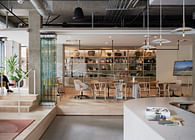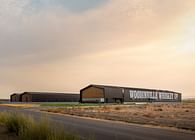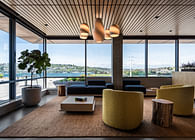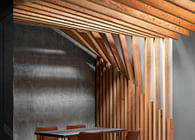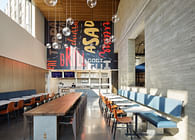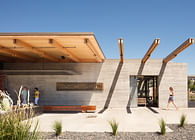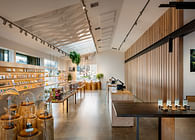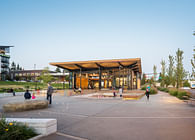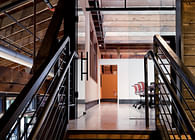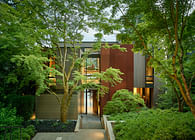
Seattle, WA
Reclaiming and repurposing the Inland Empire’s industrial past for the 21st century is at the heart of this transformative project. In 1942, Ohio Ferro Alloys constructed a process plant in Rock Island, Washington, to process ferrosilicon (a precursor to making aluminum) for the war effort. The plant, a dominant part of the Columbia River landscape for decades, continued operation until it closed in 2003. Since then, it has been left to deteriorate, an industrial remnant on the east bank of the river, straddled between a historic BNSF rail bridge that spans the river and the first dam on the Columbia, Rock Island Dam. The Port of Douglas County, looking for ways to expand economic development in the region, asked the design team to reimagine the 200-acre site and its structures and develop a concept for a new Waterfront and Innovation District, composed of a variety of uses and with the former smelter facility as the centerpiece and catalyst for future development of the site.
The project began by organizing the site into distinct zones corresponding to major activities: mixed-use/residential; light industrial/commercial; sports fields and associated facilities; waterfront park, trails and activity center; Block Chain server park; and various retail and event spaces including the tech center, restaurants and a brewery. The potential mix of old and new, and interconnected and adjacent facilities, includes the signature, 50,000-square-foot furnace building and the 11,000-square-foot materials storage building, the two principle remnant structures.
The cathedral-like scale and proportion of the furnace building coupled with its prominent location overlooking the river, make the structure incredibly enticing for reuse. At over 300-feet-long and 110-feet-wide, the furnace building soars to 70 feet in height in its central hall. The concept to transform this giant takes advantage of the imposing structure and its vast interior volume. Preliminary design calls for preserving a large portion of the interior as open space to highlight its volume. As much as possible, the existing, exposed steel structure will be preserved and remain exposed. Delicate, glass-wrapped boxes of space will be inserted into the volume, and contrast with the existing raw steel. These new “floating” spaces will be used for classrooms as part of the tech and innovation center, as well as for dynamic restaurant spaces. While the steel structure of the building is in remarkably good shape, the building shell lacks insulation and glazed openings. To stabilize the structure and ensure comfort within, plans call for re-skinning the building and adding new glazing, especially on the west side where views to the river and landscape are stunning.
A glass-enclosed passageway is proposed to connect the furnace building to the adjacent former materials storage building, itself a large building (150 feet long by 75 feet wide and 72 feet to the peak of the roof). The passageway will provide a prominent east-west visual and physical connection through the buildings and to the waterfront park beyond. The materials storage building will be left as unconditioned space. Portions of its exterior will be removed to reveal and highlight the steel structure and to provide framed views to a new amphitheater and waterfront park beyond. Eventually the material building could be converted to a boutique hotel.
Status: Unbuilt
Location: Rock Island, WA, US
Firm Role: Architect




